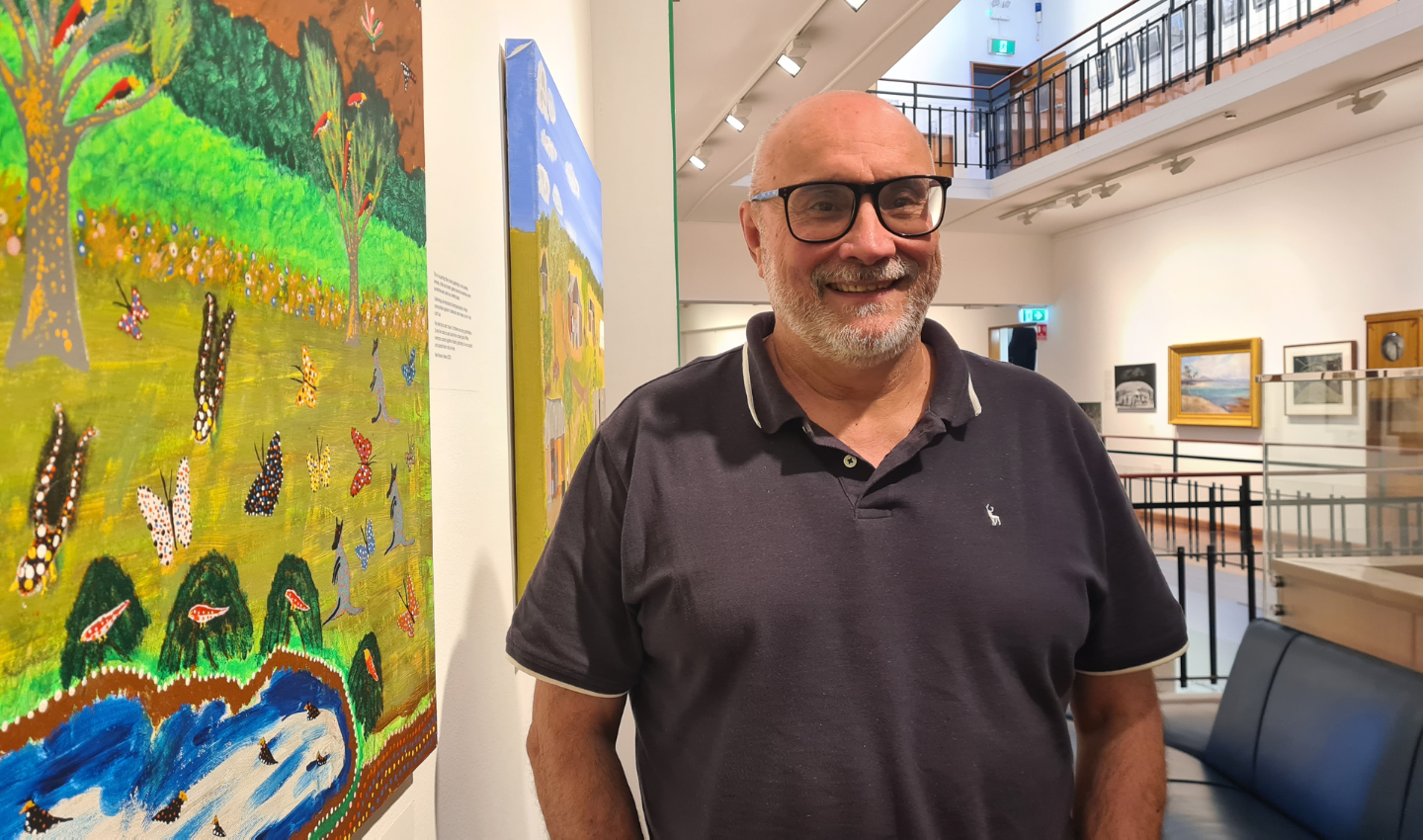Reflecting on John Monteleone’s time as Gallery Director
John Monteleone, who retires this Friday (7 June 2024) after 14 years as the director of Wollongong Art Gallery, has led his team to manage and acquire one of the largest (and growing) collections of any regional art gallery in Australia.
Described by the gallery staff as friendly and genuine, John will be missed for his breadth of knowledge, his creativity and passion about art, and dedication for sharing his knowledge with the community.
John’s work championing the art gallery’s Visiting Curator Program was mentioned by his team as one of his exceptional achievements as director. The program increased the diversity of exceptional art shown at the gallery, raised the gallery’s profile as an extraordinary regional facility, and given opportunity to many artists to curate shows at a larger gallery.
Here are a few words from John.
How did you come to be director? Did you always want to work at an art gallery?
“My parents came to Australia in the early 1960s, part of that post World War 2 migration and my dad worked at the steelworks. At one point my dad, my brothers and I all worked there. It was the big employer. There was 30,000 people employed when my dad came there in the early 60s,” he said.
“… but I always had an interest in art. Life takes you in all sorts of different directions, and after ten years I thought if I’m going to do it, I’m going to do it now.”
“At the age of twenty-nine I enrolled at the University of Wollongong, Creative Arts School. One of the things that’s obvious about the arts world is that it’s not a place where you find easy employment in the arts. So, I became an art teacher, and I taught in high school and for adults for a number of years.
“I eventually became deputy director at the Wollongong Art Gallery and then director after a time. It was an interesting journey. To tell you the truth, even when I went to creative arts, I never had a plan to work in an art gallery, it just happened.”
What is the role of a regional gallery?
“Our role is to try and encourage as much diversity and access as possible. Not just in the visual arts but in all cultural material as possible,” he said.
“Regional galleries tend to work more closely with the community. I think that arts are a very important tool within the community to tell stories that we might already know in a different way. I think Wollongong does that really well.”
How has the community responded and engaged with the gallery over the years?
“We’ve been very fortunate to have a community that’s very supportive of what we do. There’s always been this idea that galleries are elitist, but I think art is very democratic. It doesn’t matter where you come from, art speaks to everyone,” he said.
“Our focus has been on trying to encourage different people to come into the gallery. Recently, we’ve had all sorts of things including a regular music program every month which brings in a different audience. And while they’re here, they may wander and look at the rest of the gallery space.”
What makes Wollongong Art Gallery unique?
“Wollongong Art Gallery is much larger physically, a much larger gallery space than most other regional galleries,” he said.
“We’ve got eight spaces. That makes a big difference as it impacts on programming. We need to program a lot of different spaces over a 12month period, and smaller galleries might only have focus on a few shows over the same period.”
Could you tell us about a favourite or unusual exhibition?
“Steel City Sound was an exhibition which looked at the history of live music in the Illawarra. It’s an interesting project because Wollongong has long been a working-class city,” he said.
“Around the world, places that are working class often produce interesting cultural material in music or art. Like in the US, Detroit which was a car manufacturing city, had the rise of soul music.”
“Steel City Sound was looking at how the Illawarra encourages creativity but from a music point of view. We held an exhibition of visual art by musicians. We recreated a shared house experience where people could sit on a lounge and put on earphones and listen to music by local musicians. We had t-shirts from local bands and posters, and we recreated the Oxford Tavern [the old pub on Corrimal and Crown streets].”
“This was an unusual type of exhibition; one people may not have expected in an art gallery. But I think the gallery’s role is to present diversity and try and show different perspectives. And this achieved that.”
What will you do next?
“I hope to work on my art practice. I haven’t had the time to touch it for 20 years. I started as a painter and print maker but found an interest in ceramics and sculpture. That’s where my interest lies. I think I’ll pursue that for a while and see where it takes me.”

